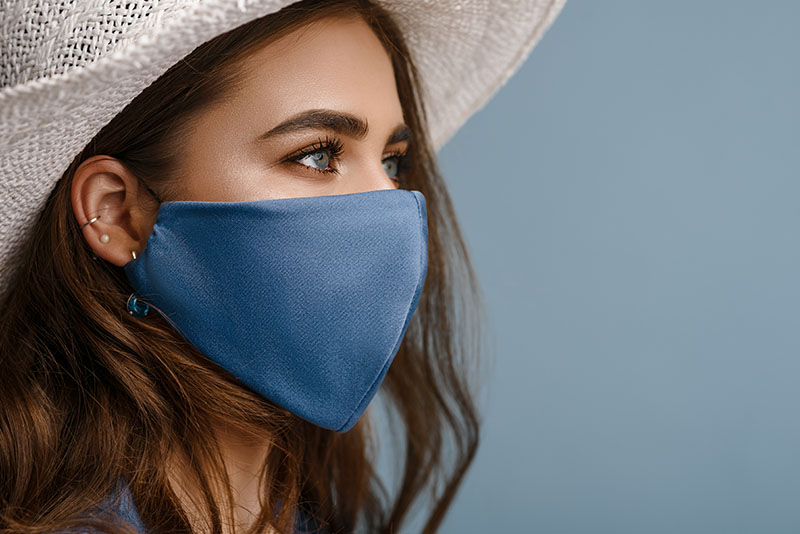
Have you been experiencing an increase in acne or skin irritation since we have to wear face masks in public? You do not need to be an essential worker wearing protective gear for hours every day to have noticed a skin reaction after wearing a face mask. This unfortunate side effect is known as mask acne, or ‘maskne,’ and could show up as pimples, redness, or irritation around your mouth, cheeks, and jawline.
What is ‘maskne’ and why does it happen?
Maskne tends to occur when sweat, skin oils, and bacteria get trapped on the skin when you are wearing a mask. Face masks irritate many people. The irritation is mainly caused by rubbing against the skin, which causes damage to the skin’s protective barrier, or by trapped moisture, which can lead to acne.
This acne is called “acne mechanica,” which also includes skin issues caused by pressure, friction, rubbing, or squeezing. It is different from other kinds of acne since it occurs only in areas where the mask has been sitting against the skin.
In healthy skin, it has an average number of bacteria and yeast, but when pores become clogged due to excess sweat and moisture from the mask. When these organisms overgrow, it often leads to pimples or acne cysts. On top of that, the warm weather during these summer months can aggravate the skin even more. This combination of sweat, oil, and moisture from breathing under the mask can lead to clogged pores.
Unfortunately, cold, dry, winter air is not going to remove the issue of maskne; it will just occur for a different reason. In this case, it will be caused by the mask rubbing against your drier-than-usual ski, which causes the hair follicles to break open and allow acne-causing bacteria into the skin.
Can you prevent maskne?
Whether you have maskne already or not, integrating these steps may help to prevent more pimples from forming in the first place.
- Regularly wash your face: Wash your face twice a day, before and after wearing a mask.
- Apply moisturizer: Moisturize after washing your face to prevent dryness and to help repair your skin’s natural protective barrier. Look for products with hydrating ingredients like ceramides, niacinamide, and glycerin.
- Change your typical makeup routine: Wearing too many products under the mask can cause a buildup on the skin, so skip wearing foundation or pick non-comedogenic products to let your skin breathe.
- Choose a mask that works for you: If you can, try to pick soft, cotton masks, which do not cause a lot of rubbing and irritation. If you decide to exercise with a mask, sweat and friction are going to happen, so make sure you use a clean, dry mask each time. After your workout, remove the mask and wash your face.
The most important thing you can do when it comes to maskne is to pay attention to how your skin reacts when you wear a mask. Take note of the moisture building up under your mask, or if your skin feels irritated. At this point, you can step away from people, remove your mask, dry any built-up moisture, and let your skin breathe for a few minutes. It is OK to give your skin a break.
How do you treat maskne?
The good news is maskne is treatable and responds to regular acne medication. Here are a few things you can do to help you maskne heal:
- Spot treatments: If you are already experiencing a crop of mask-related pimples, you can use a spot treatment containing salicylic acid, sulfur, zinc, or benzoyl peroxide.
- Use acne-treating cleansers: If you have acne-prone skin, it is especially important to incorporate targeted treatments to battle maskne. Choose cleansers that contain salicylic acid or benzoyl peroxide.
- Add retinol: Retinol is an ingredient that helps speed cell turnover, which helps prevent dead skin cells from clogging your pores. Start small and slowly increase the frequency.
- Try over the counter treatments: You could also try an over-the-counter product, especially one that contains Adapalene, which is another ingredient that helps with blackheads and clogged pores.
- Create a barrier. When maskne shows up as skin irritation, you may need a “barrier” product to protect your delicate skin. Applying a thin layer of healing ointment before putting your mask on can help irritated skin.
While these methods can be helpful, if they do not work, you may need to contact a dermatologist or esthetician to come up with a more intensive way to treat this stubborn condition.
